Presented below are a series of poems by Paula Bohince paired with the Japanese artworks that inspired them. The scroll paintings, excerpted from Birds, Beasts, Blossoms, and Bugs (1976), are from the Edo period and take nature as their subject. A poem and accompanying image from this series which does not appear below ran in the Parting Words section of the Spring 2013 issue of Tricycle.
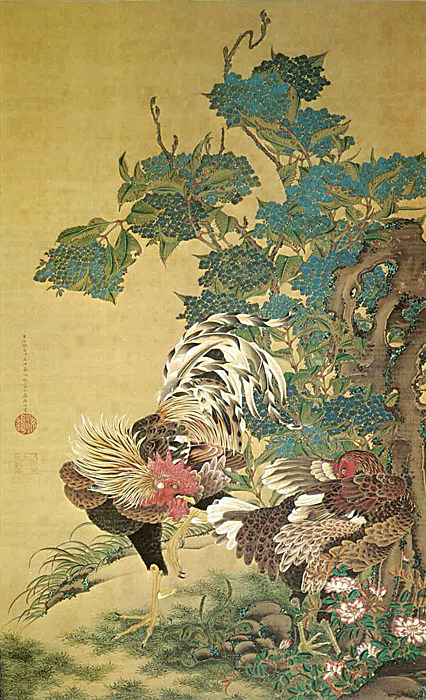
Drenched azure, bunched and hung. Sea-
grapes poised to become sea-wine,
vinegar if love is unrequited. Trellis to shade
both coq and coquette,
his tail a fury of feathers, waterfall-white.
The red comb curls forward; glinting threat
of golden spur. He will tame her,
though she hides behind fans of wings,
kimono sleeves of wings.
The question posed, now all between them
is a test, pas de deux of sense and patience.
—after the painting “Rooster and Hen Before Hydrangeas” by Itō Jakuchū, 1716-1800, Japan
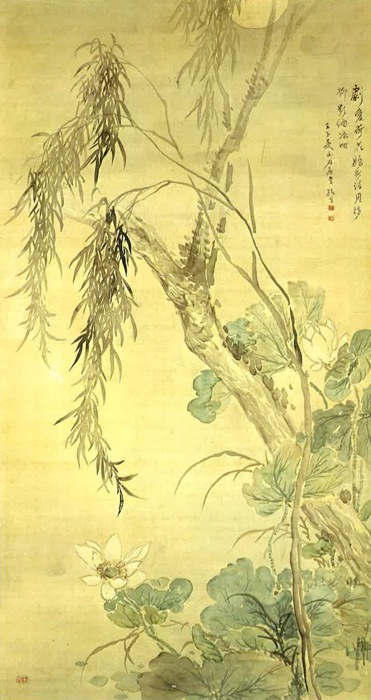
The full moon casts its wealth
to Earth, gold spilling onto the lotus pond, the horizon.
A lotus blossom, which has known
the poverty of loneliness, is now free to express.
Lit on Nature’s stage, in a Noh dance,
it forges emotions of pity and strength—
ghost among the living.
A green chorus accompanies its whiteness,
underscoring the plaintive story.
Ivory beauty, plaiting the pond with its silent song, as
a comb ornaments a woman’s hair.
—after the painting “Lotus and Willow in Moonlight” by Tsubaki Chinzan, 1801-1854, Japan
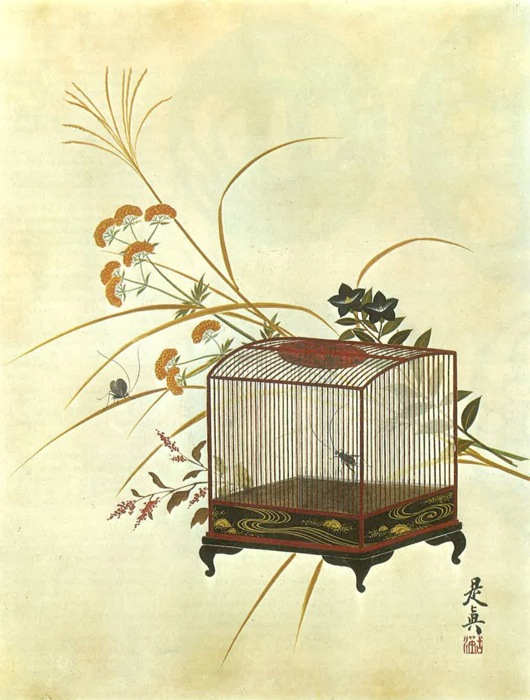
Like a prince, lonely in his palace,
the pet is kept. For luck, in
lacquered bondage.
Though indigo, orange, and red
the blossoms, their dulled silhouettes
behind the cage’s bars
are ominous. Ah, how life light
at birth darkens at the end.
A cricket on the pampas grass
outside wants in. Plotting its escape
from what looks like freedom.
—after the painting “Crickets, Cage, and Flowers” by Shibata Zeshin, 1807-1891, Japan
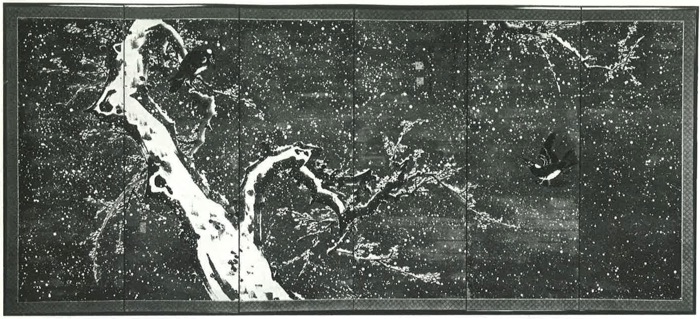
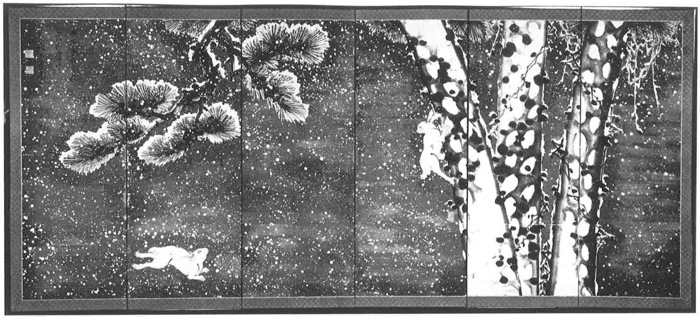
Disbelief of snow, suspended. So sudden
the plum blossoms
cannot close and hang instead
like broken parasols. As the heart, un-steeled
against pain, is broken.
How one rabbit leaps through terrible
darkness toward he who climbed the plum
tree, magically. Night-
coated crows home equally to each other,
like to like. Harmony,
though the field is deadly. Tonight, it is fled
and life triumphs over tragedy.
—after the painting “Rabbits and Crows in the Night Snow” by Dagyoku Sanjin, 1733-1778, Japan
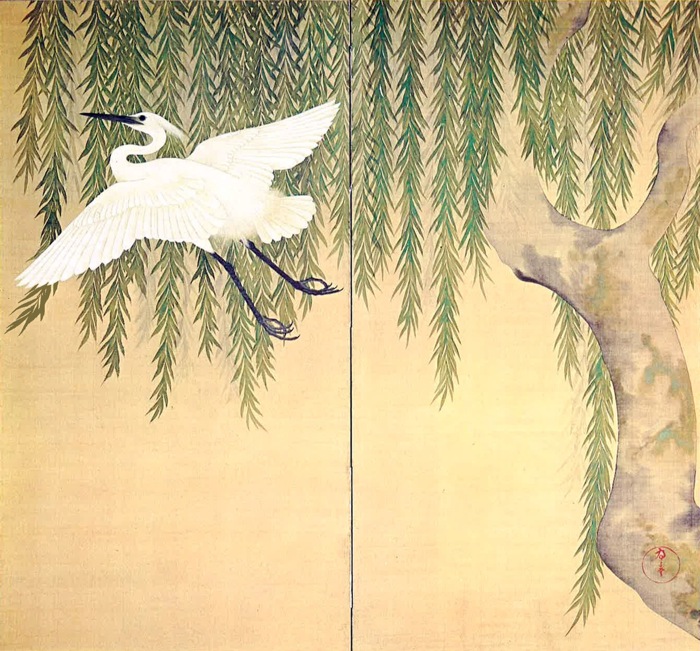
When the egret releases its whiteness
and lifts, careless, against the willow, black
bill piercing the future, likewise
leggings dragging the past…
When the thousand-leafed tree sways
like nostalgia, curtains in a house
one is forever departing,
concentrate on the tranquility of solitude
and not its twin that is loneliness.
Wingèd moon over stilled ropes of green,
rising from seen to unseen.
—after the painting “Willow and Egret” by Suzuki Kiitsu, 1796-1858, Japan
Thank you for subscribing to Tricycle! As a nonprofit, we depend on readers like you to keep Buddhist teachings and practices widely available.